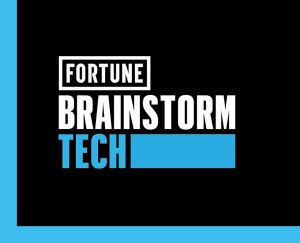Communities and businesses play a crucial role in shaping the Federal Reserve’s monetary policy. To inform our decision-making, the San Francisco Fed hosts discussions with the people we serve so we can hear their stories and perspectives on how economic data translates into real impacts in the Twelfth District. Our “Beyond the Numbers” series shares some of those insights with you.
When considering the Twelfth District’s high-tech economy, Silicon Valley springs immediately to mind. In fact, the tech sector is an important economic driver throughout the District. Case in point: Utah, where the state’s technology companies are a significant source of job creation and economic output.
To deepen the SF Fed’s understanding of this significant element of Utah’s economy, Mary Daly, President and CEO of the San Francisco Fed, sat down with CEOs and other senior executives representing Utah-based tech companies for a discussion about their industry. She was joined by both Abby McLennan, Vice President and Regional Executive of the SF Fed’s Salt Lake City Branch, and Kevin Ortiz, co-head of the EmergingTech Economic Research Network (EERN). An initiative of the SF Fed in close collaboration with the Federal Reserve System Innovation Office, EERN is focused on understanding how new technologies like genAI are shaping the economy of the future.
During their roundtable conversation, Mary and the participants explored the key trends and changes affecting the sector. With a view to the increasing use of genAI, the participants also explored the impacts on the sector as the use of AI tools spread, including on labor productivity and employment.
The Evolution of Utah’s High-tech Economy
Mary and the roundtable participants began their discussion with a general survey of the state’s tech sector. The executives felt there was substantial momentum in the industry with a focus on start-up funding and the development of the state’s high-tech ecosystem.
The participants saw this recent momentum as a function of the state’s overall reputation as a business-friendly environment. More specifically, they cited a significant increase in capital investment in the latter half of 2023. After an extended period of low investment through 2022 and the start of the next year, they noted that investors have injected several hundred million dollars into both existing tech companies and start-ups.
Asked to characterize this round of investment, the executives noted that investors are primarily focused on AI. The leaders felt there is a perception that investments in AI have become a matter of business sustainability, and that without AI, businesses will lose their competitive edge.
Preparing the Workforce of the Future
Given the growth of high-tech investment, Mary asked participants how the labor supply was keeping up with the changing needs of the tech sector and the rise of AI. The roundtable participants were generally optimistic about the resiliency of the state’s labor market. They did note some potential for entry-level positions to be eliminated by the adoption of genAI tools. However, they emphasized that it is almost impossible to build a successful business without people. As a participant noted, “To remain relevant, people are still the most important asset, and you can’t replace that.”
Asked about specific genAI use cases, the executives cited deploying AI tools to fulfill back-office and marketing tasks like e-mail correspondence and social media posts. Looking ahead, one business leader was exploring the use of genAI to solicit and retain new customers. These examples echo ones that the SF Fed has heard in its other roundtables on genAI trends.
The Challenge of AI Acceptance
The roundtable participants emphasized that in Utah, AI is currently “very hyped”. They shared that companies are pushing the boundaries of what can be done with these tools. Looking ahead, the participants stressed that accepting AI as a trusted tool will be an important factor influencing whether the current momentum continues.
The participants felt that achieving trust in AI will be a challenge. One participant pointed to a reluctance on the part of decision-makers to use AI-generated models and forecasts to guide business decisions.
To overcome such reluctance, the executives emphasized that the data used to train genAI tools must be very good to avoid mistakes in what they produce. Yet, even with high quality training data, participants felt that mistakes could not be completely eliminated, and both companies and consumers may have to accept a certain level of risk.
Understanding New Technology Supports the Fed’s Mission
The high-tech sector has been one of the most dynamic parts of our economy, driving fundamental changes in business and work. The increasing adoption of genAI has only accelerated this trend. Understanding how these trends affect the communities we serve is crucial to fulfill our mission and support a strong economy for all Americans. That is why as part of EERN, we will continue to survey our business and community leaders about their experiences with the changing high-tech economy and share what we have learned with our wider Twelfth District community.
The views expressed here do not necessarily reflect the views of the management of the Federal Reserve Bank of San Francisco or of the Board of Governors of the Federal Reserve System.



